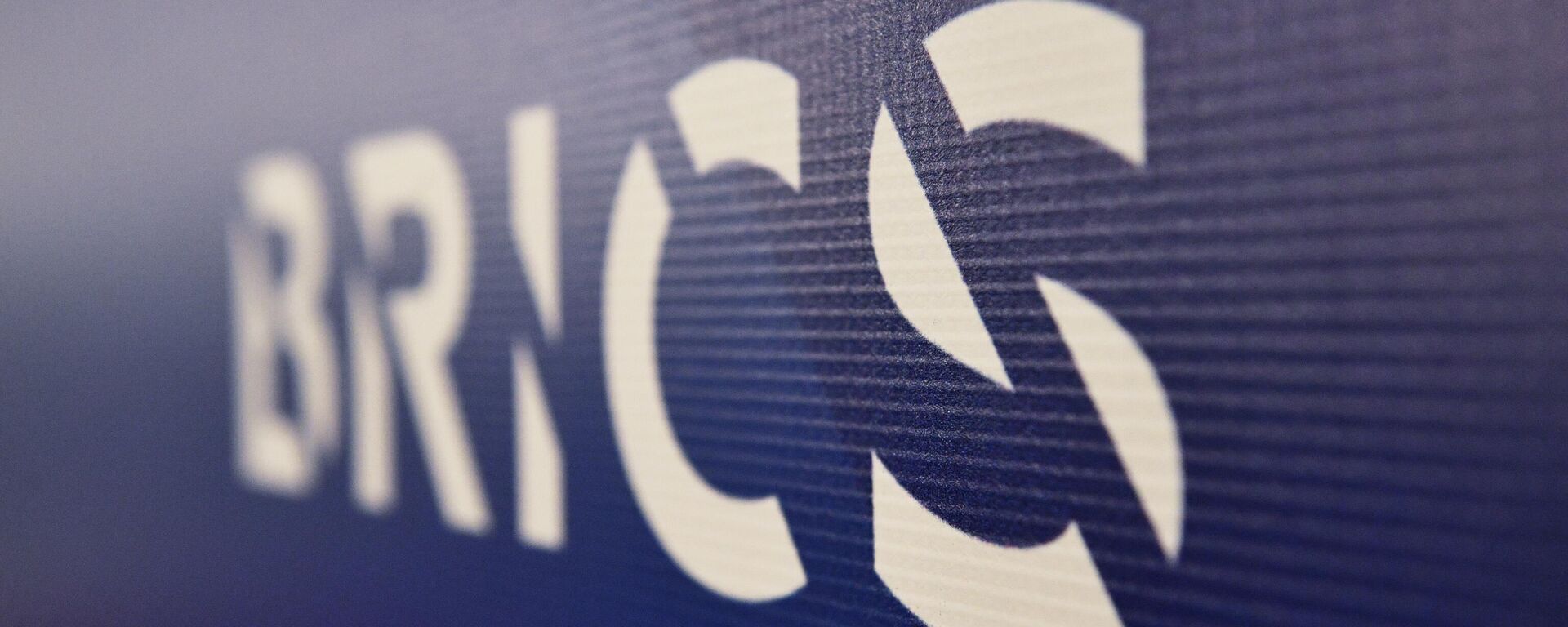https://sputnikglobe.com/20240814/serbia-remains-island-of-independence-from-globalist-us-empire--analyst-1119762245.html
Serbia Remains Island of Independence From 'Globalist' US Empire – Analyst
Serbia Remains Island of Independence From 'Globalist' US Empire – Analyst
Sputnik International
Serbian-American journalist Nebojsa Malic joined Sputnik’s The Backstory program Monday to discuss the latest developments in the Central European country, which still struggles to maintain a fragile sovereignty as it navigates a path independent from the influence of its larger and more powerful neighbors.
2024-08-14T04:05+0000
2024-08-14T04:05+0000
2024-08-14T04:05+0000
george soros
serbia
belgrade
ukraine
nato
us hegemony
us imperialism
analysis
color revolution
attempted coup
https://cdn1.img.sputnikglobe.com/img/07e8/08/0b/1119714698_0:161:3071:1888_1920x0_80_0_0_0d0664e28ccf5ab67d032cfa06a4bd64.jpg
Relations between Serbia and the United States have remained strained for a number of years.The country’s independent-minded president Slobodan Milošević attracted the ire of Western leaders during the 1990s as the country resisted calls to fully liberalize its economy after the collapse of the Socialist Federal Republic of Yugoslavia. Milošević would controversially be prosecuted on war crimes charges as ethnic strife pervaded the region, and the Serbian capital of Belgrade would find itself targeted by NATO bombs during a 1999 campaign that killed hundreds and left the land despoiled by depleted uranium that has led to elevated rates of cancer and birth defects decades later.Serbia has maintained a healthy skepticism of a creeping Western hegemony in the years since, with Chinese President Xi Jinping recognizing the country’s relative autonomy during a diplomatic trip tour through Europe earlier this year.Serbian-American journalist Nebojsa Malic joined Sputnik’s The Backstory program Monday to discuss the latest developments in the Central European country, which still struggles to maintain a fragile sovereignty as it navigates a path independent from the influence of its larger and more powerful neighbors.“They always end up on high alert for any sort of mass event, and that was the case this time,” he continued, referring to recent protests over the Serbian government’s signing of a deal with a German conglomerate to exploit the country’s lithium reserves. “Russia actually took the unprecedented step of warning Belgrade… that there are some foreign services that might be plotting to use this as an anti-government [riot], basically hijacking this protest for the purpose of regime change. So, the Serbian government played with relative kid gloves.”Central and Eastern Europe have been rocked by several so-called “color revolutions” since the 1990s during which Western-backed political forces have succeeded in overthrowing governments deemed to be working against US interests. Among such events have been Ukraine’s 2014 Euromaidan coup, Georgia’s 2003 “Rose Revolution” and Ukraine’s 2004 “Orange Revolution.”These events utilize and perfect so-called non-violent protest tactics developed by the American political scientist Gene Sharp, who advised protestors to aggressively bait security forces into an overreaction to achieve a propaganda victory over a government targeted for regime change. By training and providing unlimited resources to a small cadre of dedicated US-backed influencers and activists, Western interests are able to create the conditions for regime change through societal destabilization and careful manipulation of the media.Frequently such protest movements are co-opted by the United States to implement neoliberal policy, noted analyst Marcie Smith, with wealthy donors like George Soros standing to benefit from the ensuing economic deregulation.“As it turns out, those were led by these pro-Western, Soros-funded activists, thereby sort of justifying the government’s fears,” Malic said of Serbia's most recent protests. “The problem with people who want to stage another color revolution in Serbia is that people here are always on the alert for one of these things. It’s because of the events of 2000 – they’ve sort of been sold a bill of goods back then and are extremely, extremely cautious of trying to get that to happen to them again.”“But it concerns me that these people might do something terribly stupid in order to bolster their domestic political rating or show their commitment to the official ideology of the globalist American empire or whatnot and that could create problems.”
https://sputnikglobe.com/20240812/serbia-expects-official-invitation-to-brics-summit-in-coming-days---deputy-prime-minister-1119729774.html
https://sputnikglobe.com/20240508/china--serbia-form-partnership-after-depraved-cia-attack-in-belgrade-1118343031.html
serbia
belgrade
ukraine
russia
Sputnik International
feedback@sputniknews.com
+74956456601
MIA „Rossiya Segodnya“
2024
John Miles
https://cdn1.img.sputnikglobe.com/img/07e8/01/19/1116388787_0:0:1316:1316_100x100_80_0_0_77e70d36afd983012b1c5d38ddb84156.jpg
John Miles
https://cdn1.img.sputnikglobe.com/img/07e8/01/19/1116388787_0:0:1316:1316_100x100_80_0_0_77e70d36afd983012b1c5d38ddb84156.jpg
News
en_EN
Sputnik International
feedback@sputniknews.com
+74956456601
MIA „Rossiya Segodnya“
Sputnik International
feedback@sputniknews.com
+74956456601
MIA „Rossiya Segodnya“
John Miles
https://cdn1.img.sputnikglobe.com/img/07e8/01/19/1116388787_0:0:1316:1316_100x100_80_0_0_77e70d36afd983012b1c5d38ddb84156.jpg
serbia independence, serbia foreign policy, serbia us imperialism, serbia belgrade bombing, serbia globalism, serbia western imperialism, us hegemony, soros fund, mass protests, color revolution, belgrade bombing, us bombs, depleted uranium, uranium bombs, american bombs, american coup, us-backed coup, coup in serbia, revolution in serbia, serbian revolution, serbian coup
serbia independence, serbia foreign policy, serbia us imperialism, serbia belgrade bombing, serbia globalism, serbia western imperialism, us hegemony, soros fund, mass protests, color revolution, belgrade bombing, us bombs, depleted uranium, uranium bombs, american bombs, american coup, us-backed coup, coup in serbia, revolution in serbia, serbian revolution, serbian coup
Serbia Remains Island of Independence From 'Globalist' US Empire – Analyst
The country’s history provides Serbians with a unique perspective on the machinations of Western imperialism.
Relations between Serbia and the United States have remained strained for a number of years.
The country’s independent-minded president
Slobodan Milošević attracted the ire of Western leaders during the 1990s as the country resisted calls to fully liberalize its economy after the collapse of the Socialist Federal Republic of Yugoslavia. Milošević would controversially be prosecuted on war crimes charges as ethnic strife pervaded the region, and the Serbian capital of Belgrade would find itself targeted by NATO bombs during a 1999 campaign that killed hundreds and
left the land despoiled by depleted uranium that has led to elevated rates of cancer and birth defects decades later.
Serbia has maintained a healthy skepticism of a creeping Western hegemony in the years since, with Chinese President Xi Jinping recognizing the country’s relative autonomy during a diplomatic trip tour through Europe earlier this year.
Serbian-American journalist Nebojsa Malic joined
Sputnik’s The Backstory program Monday to discuss the latest developments in the Central European country, which still struggles to maintain a fragile sovereignty as it navigates a path independent from the influence of its larger and more powerful neighbors.
“Ever since the color revolution of 2000 any sort of mass protest, no matter how legitimate, always gets hijacked by elements sort of recruited by foreign governments,” said Malic, referring to the so-called “Bulldozer Revolution” that overthrew Milošević.
“They always end up on high alert for any sort of mass event, and that was the case this time,” he continued, referring to recent protests over the Serbian government’s signing of a deal with a German conglomerate to exploit the country’s lithium reserves. “Russia actually took the unprecedented step of warning Belgrade… that there are some foreign services that might be plotting to use this as an anti-government [riot], basically hijacking this protest for the purpose of regime change. So, the Serbian government played with relative kid gloves.”

12 August 2024, 04:28 GMT
Central and Eastern Europe have been rocked by several so-called “color revolutions” since the 1990s during which Western-backed political forces have succeeded in overthrowing governments deemed to be working against US interests. Among such events have been Ukraine’s 2014 Euromaidan coup, Georgia’s 2003 “Rose Revolution” and Ukraine’s 2004 “Orange Revolution.”
These events utilize and perfect so-called non-violent protest tactics developed by the American political scientist Gene Sharp, who advised protestors to aggressively bait security forces into an overreaction to achieve a propaganda victory over a government targeted for regime change. By training and providing unlimited resources to a small cadre of dedicated US-backed influencers and activists, Western interests are able to create the conditions for regime change through societal destabilization and careful manipulation of the media.
Frequently such protest movements are co-opted by the United States to implement neoliberal policy,
noted analyst Marcie Smith, with
wealthy donors like George Soros standing to benefit from the ensuing economic deregulation.
“As it turns out, those were led by these pro-Western, Soros-funded activists, thereby sort of justifying the government’s fears,” Malic said of Serbia's most recent protests. “The problem with people who want to stage another color revolution in Serbia is that people here are always on the alert for one of these things. It’s because of the events of 2000 – they’ve sort of been sold a bill of goods back then and are extremely, extremely cautious of trying to get that to happen to them again.”
“The opposition [has] been very fragmented and is basically – their policy is ‘we’ll do whatever the West says to do or tells us to do,’” he added. “It doesn’t really have much traction in the population.
“But it concerns me that these people might do something terribly stupid in order to bolster their domestic political rating or show their commitment to the official ideology of the globalist American empire or whatnot and that could create problems.”





